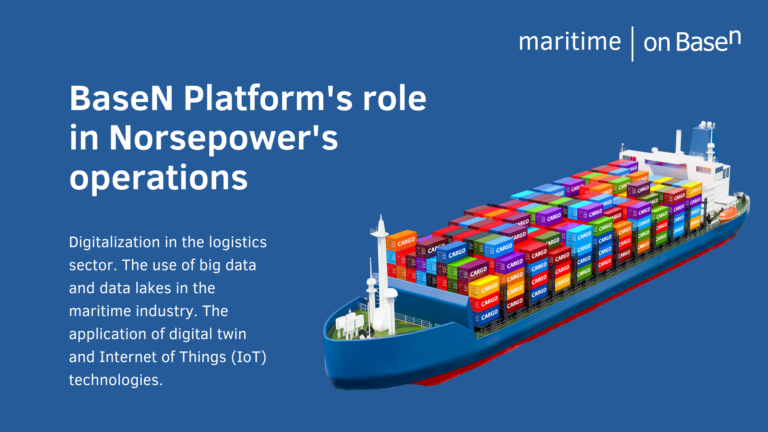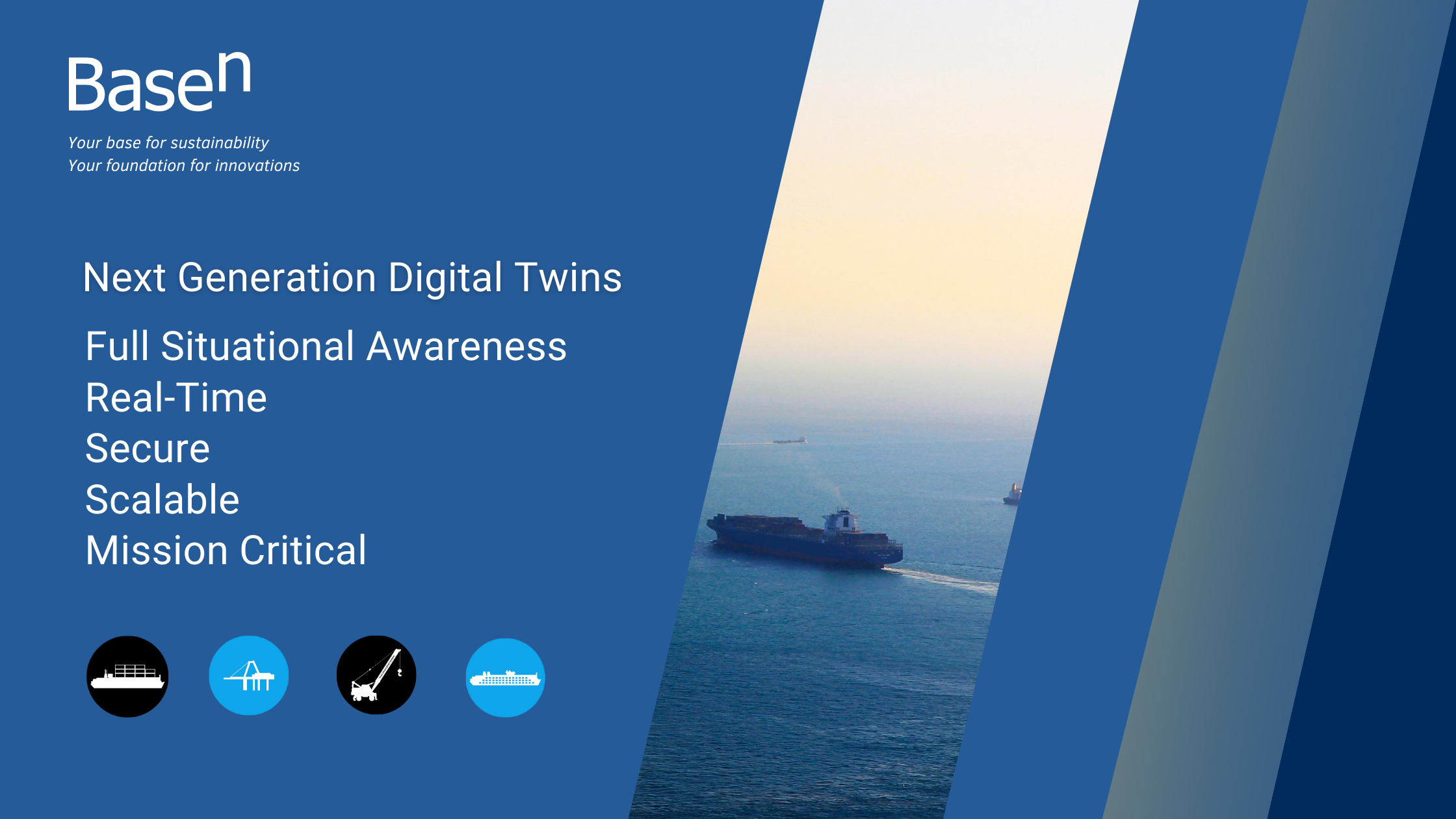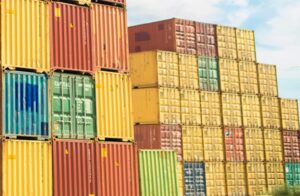In this interview, the focus is on digitalization in the maritime industry and its impact on various aspects of the sector. The interviewee, Chief Sales Officer at Norsepower, Mr. Jukka Kuuskoski, provides insights into why digitalization is gaining prominence, its potential benefits, and how Norsepower, a company specializing in auxiliary wind propulsion and mechanical sails, is embracing digitalization and digital transformation. The interview covers topics such as the role of digitalization in improving efficiency in the logistics sector, the opportunities for Norsepower in the digitalization wave, the use of big data and data lakes in the maritime industry, the application of digital twin and Internet of Things (IoT) technologies, and the significance of BaseN’s platform in Norsepower’s operations.

Why do you think digitalization is increasingly highlighted for the maritime industry now more than ever?
Jukka Kuuskoski: “There are several reasons why digitalization is being implemented in various industries, including the shipping business. One of the main reasons is the increasing competition among companies. With multiple organizations vying for the same customers, it has become crucial to improve efficiency, accuracy, and reliability. Achieving these goals requires a deep understanding of how your systems are functioning and the ability to make informed decisions based on that information. As a result, digitalization has become a prevalent practice across industries, including shipping.
Digitalization offers tremendous potential for development, especially in traditional shipping. This sector has traditionally lagged behind in terms of technological advancements, but now there is significant room for growth. Embracing digitalization can lead to enhanced operations, improved business-savviness, and a competitive edge in the market. It’s not just limited to the shipping industry; digitalization is being embraced everywhere due to its transformative capabilities.”
How do you see the impact of this increasing digitalization in the maritime to the whole logistics sector?
Jukka Kuuskoski: “Ships and shipping play a vital role in a larger logistics chain, and enhancing the overall efficiency of this chain is a significant concern. The optimization process involves various aspects, such as pre-loading and post-loading operations, port operations, and the timing and speed at which ships enter and move between ports. Achieving maximum efficiency requires seamless interaction and collaboration among different parties involved in the logistics chain. However, this has been and continues to be a challenge due to the multitude of players involved.
While it is important to acknowledge the complexities of the entire logistics chain, our focus lies on what we can directly influence and improve, which is the operations of our ships. Shipowners and charterers also collaborate with their respective counterparties to enhance the efficiency of the entire chain. It is a complex setup, but I have confidence that by harnessing the power of data and incorporating valuable information, we can make significant improvements.”
How is Norsepower riding this wave of digitalization and digital transformation?
Jukka Kuuskoski: “The implementation of digitalization and digital tools and technologies has played a pivotal role in the modernization of our concept, particularly in relation to Flattner rotors. It is thanks to digitalization that we have been able to achieve greater efficiencies, effectiveness, reliability, as well as remote monitoring and diagnostics in our products. The availability of advanced technology has made these advancements possible.
In fact, I would go as far as to say that Norsepower would not be the company it is today without the opportunities provided by the implementation of digital technologies. The incorporation of these digital advancements has been instrumental in shaping our capabilities and enabling us to offer innovative solutions in the field.”
What are other opportunities with digitalization that you may be exploring in the future?
Jukka Kuuskoski: “When we look at rotor sails, both the ones currently in operation and the ones we are going to deliver, we continuously learn from our customers, who are the ship owners. Shipyards and ship designers are also heavily involved in this learning process. Through these interactions, we gather valuable insights that allow us to improve and adjust our control systems. Our focus is not only on maximizing rotor sail efficiency, but also on optimizing the ship’s overall efficiency by individually adjusting the rotor sails when multiple units are present on board. This approach is based on the availability of more information and a deeper understanding of how the ship performs in different weather conditions and operating situations.
It’s important to highlight that this learning process goes beyond the confines of a laboratory or office. We rely on the interaction and experience gained from our customers, who are also discovering new possibilities in ship navigation. This is particularly relevant in modern shipping, which has predominantly relied on diesel engines and propellers for propulsion. By reintroducing sails to ocean transportation, we introduce a new element of free energy and explore ways to maximize its utilization. This pursuit of maximizing the use of free energy is the key aspect of our work.”
What critical issues in the maritime and shipping industry do you think digitalization and/or digital transformation can help solving?
Jukka Kuuskoski: “From our perspective, our main focus is on reducing emissions and enhancing the environmental sustainability of shipping operations. This involves maximizing the utilization of wind energy, which is a free and renewable resource for ships. To achieve this target, we rely on digital tools and systems that assist us in optimizing our operations. These tools not only benefit us but also support our customers in integrating sustainable practices into their daily operations. It is crucial for them to train their personnel and lead their operations in a manner that recognizes the importance of environmental sustainability as a key factor in improving their businesses. This transition involves a learning process, encompassing not only technical aspects but also cultural shifts within companies and individuals’ work practices.”
Where do you see the role of big data and data lakes in the enhancement of the maritime industry?
Jukka Kuuskoski: “The term “big data” is indeed expansive, encompassing the utilization of vast amounts of information derived from sensors, wind statistics, weather data, and various other sources. It involves the integration and development of algorithms capable of generating meaningful results for the end user. Clearly defining the objectives is crucial in leveraging big data effectively. This entails determining what information needs to be collected, whether it is already being captured through sensors or other means, and how all the data can be consolidated. Achieving this requires a range of professional competencies. Ultimately, the successful implementation of complex systems, including big data initiatives, necessitates a combination of domain knowledge in business or technical operations, as well as expertise in software coding and IT that aligns with the specific needs of the business.”
What are your perspectives on digital twin and Internet of Things technologies applied in the shipping and maritime industry?
Jukka Kuuskoski: “We consider the application of digital twin technology in our specific technology and products to be highly intriguing. The focus lies on the interaction between the ship and the rotor sail performance, as the rotor sail can greatly enhance the ship’s capabilities. Through continuous collaboration with our customers, we constantly learn and gain insights. Digital twin technology plays a vital role in this process by enabling us to be more precise and uncover previously unnoticed issues. It allows us to understand how the ship behaves in different scenarios and how rotor sails can be optimally utilized to enhance operational efficiency and environmental sustainability. Ultimately, our goal is to reduce fuel consumption and provide the ship with an enhanced sailing experience. The digital twin encompasses not only the operation of our product but also the entire working system, including the ship’s characteristics.”
When companies want to adopt digital twin technology, what are the key things you see that they need to understand first?
Jukka Kuuskoski: “It is expected and crucial for companies to have a deep understanding of their own products, including their behavior and performance factors. This requires the collection of relevant data and information pertaining to various parameters that influence the product’s performance. However, one of the significant opportunities for overall improvement lies in understanding the broader context. This involves engaging with different stakeholders, such as customers, suppliers, and considering environmental conditions that may not have been previously explored. To enhance efficiency, it is essential to broaden the perspective and integrate data from these sources into the analysis algorithms. Many companies with systems that interact with different components or systems are already aware of this approach. The key lies in proactively seeking external information, fostering openness, and promoting integration to unlock new possibilities for improvement.”
What are the key areas you see this digital twin technology brings benefits for Norsepower?
Jukka Kuuskoski: “The primary key benefit for us lies in enhancing our customers’ business. By improving their operations and overall efficiency, we provide added value to our customers. This, in turn, becomes a benefit for our own business. Through the utilization of our systems, including digital twins, we have the potential to enhance the total efficiency and performance of our customers’ operations in various ways. The ability to leverage these elements and characteristics contributes to the mutual success of both our customers and our company.”
What role does BaseN and our platform play for you now and also in the future?
Jukka Kuuskoski: “Currently, we have a close collaboration with BaseN and leverage their technology platform, which plays a significant role in enabling the features and performance of our products. We are excited about the opportunity to continue working together and further develop our systems in partnership with BaseN’s skilled and experienced team. This collaboration will allow us to maintain our leading position in auxiliary wind propulsion and mechanical sails, which are our areas of expertise. We look forward to the continued success and advancement that will result from this collaboration.”
In conclusion, digitalization is increasingly shaping the maritime industry, offering significant growth opportunities and addressing critical issues such as efficiency, environmental sustainability, and collaboration within the logistics sector. Norsepower’s embrace of digitalization and its collaboration with BaseN position the company at the forefront of digital transformation in the maritime industry, enabling them to provide innovative solutions and enhance its customers’ businesses.




